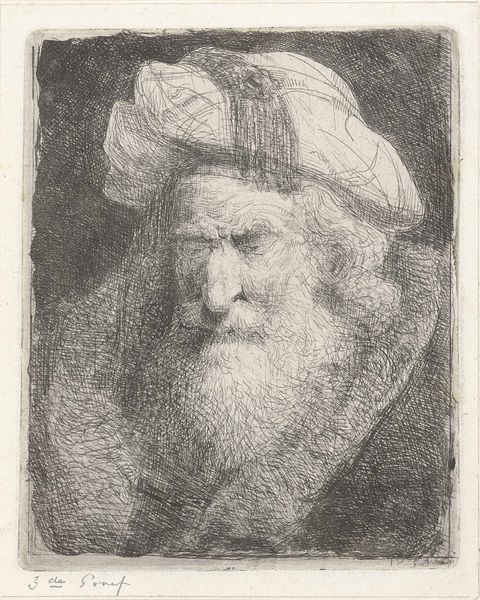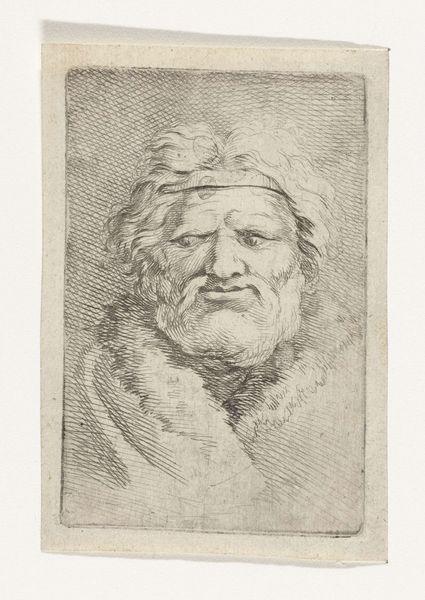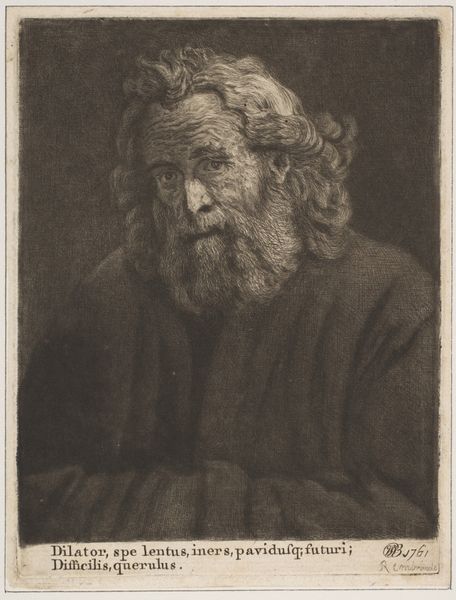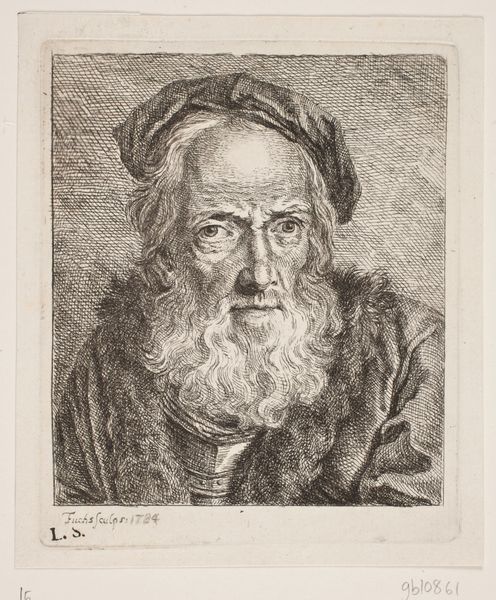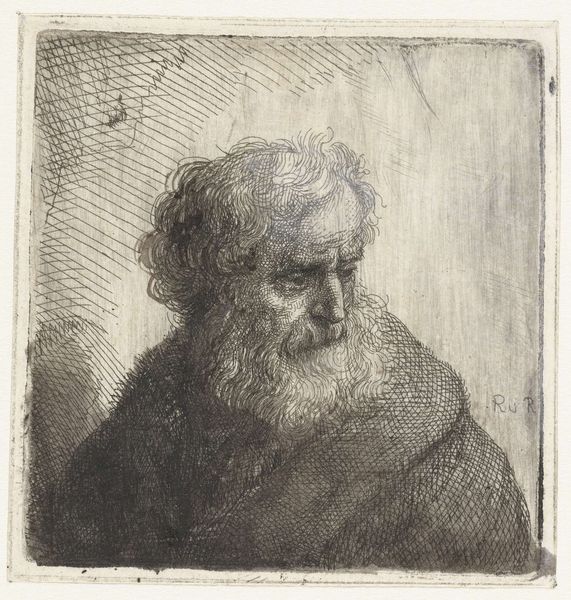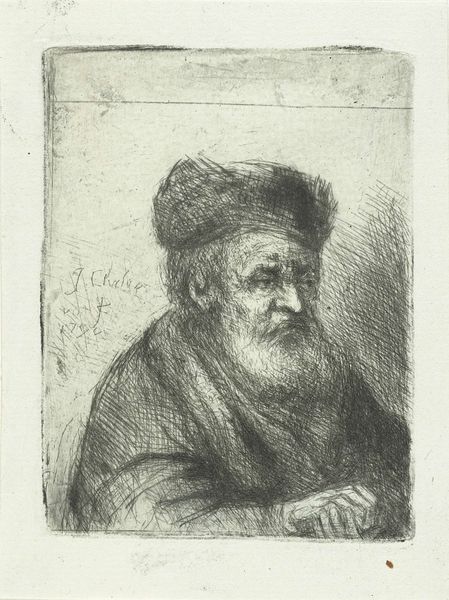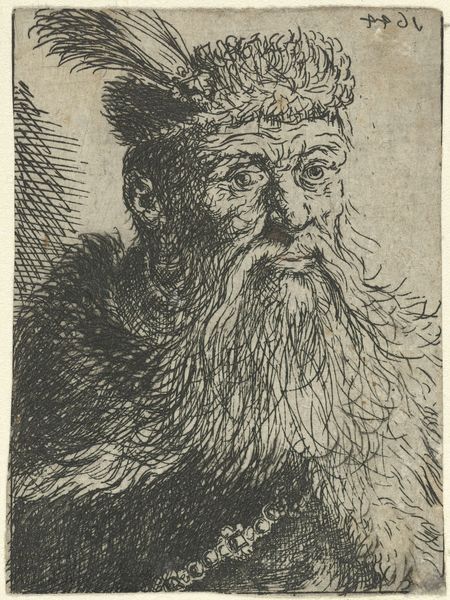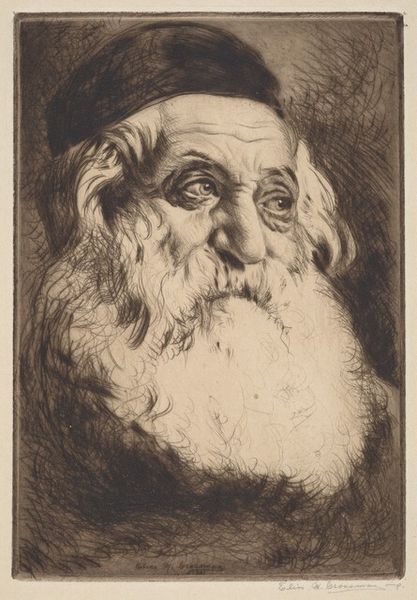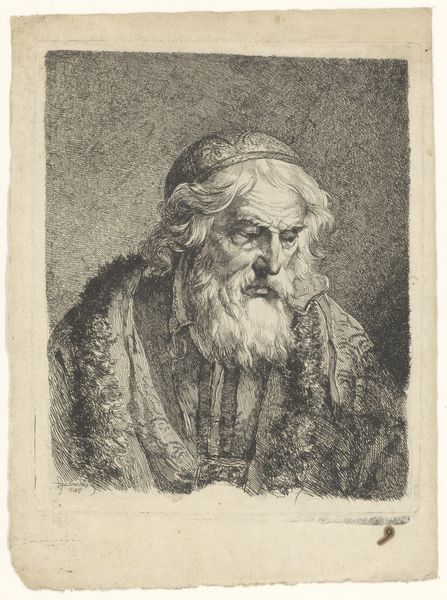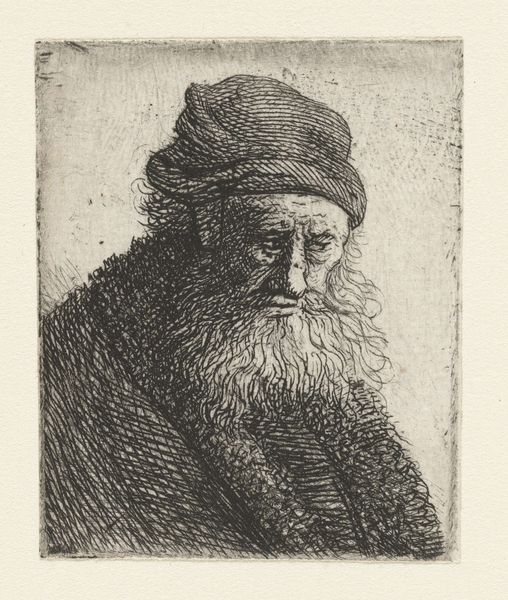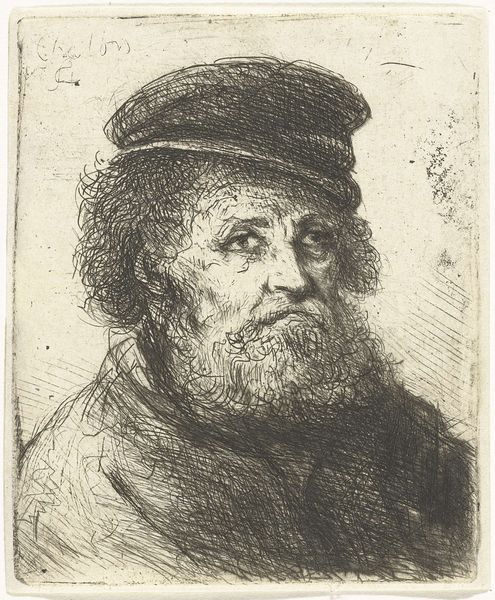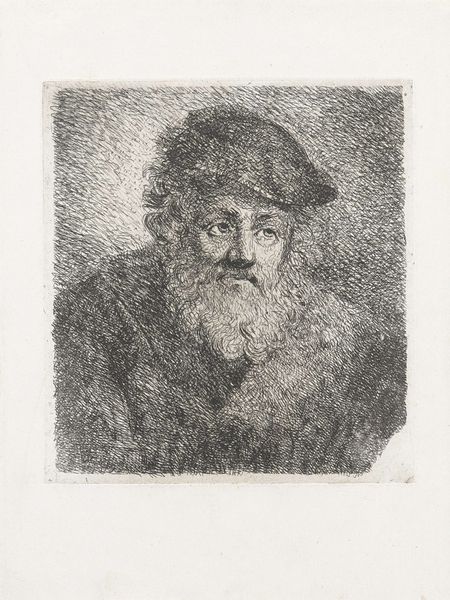
print, engraving
#
portrait
# print
#
portrait reference
#
line
#
portrait drawing
#
history-painting
#
engraving
#
realism
Dimensions: width 102 mm, height 126 mm
Copyright: Rijks Museum: Open Domain
Curator: Welcome. Here we have Jacobus Ludovicus Cornet's "Oude man met baard," created sometime between 1825 and 1882. It is an engraving printed on paper. Editor: Immediately, there's this potent somberness emanating from the man's face and dark surroundings. The textures are palpable despite the simple palette. It feels both aged and timeless, no? Curator: Indeed. The line work is masterful, particularly in the rendering of the beard, a chaotic but controlled explosion of strokes that define the man's age and, perhaps, wisdom. Editor: I'm drawn to the process of engraving. Imagine the physical act of carving into that copper plate, each line deliberate, almost a mark of labor that mirrors the weight of time etched onto the subject's face. What can you tell me of the original making? Curator: The print’s graphic arrangement presents the human likeness and experience through the use of only line, shape, tone, and texture to portray detail, emphasizing pure art qualities. Look, especially, at the shadows, used with so much subtlety and depth around the hat and shoulders. Editor: Consider what printmaking allowed—the mass dissemination of images to broader audiences. Was Cornet striving to portray universal qualities about aging, mortality, and knowledge through the subject, a humble "old man," and via the accessibility of print? Curator: That could certainly be inferred. Yet, when viewing the final work of art in a Realist style and in the portrait form, the artistic merit really resides in Cornet's facility with this material; how lines coalesce to form textures, and tonality to represent both material substance and emotive depths. The focus moves, ultimately, back to aesthetic construction. Editor: The very material tells its own story, from the plate's physical transformation at the hand of Cornet to the distribution of the image into wider circulation to more modest communities. Such works humanize history and offer pathways to consider where we, in contemporary terms, meet it today. Curator: A most interesting point of intersection to conclude on. The value of seeing as intrinsic versus making connections outside its context is perhaps its great enduring quality.
Comments
No comments
Be the first to comment and join the conversation on the ultimate creative platform.
